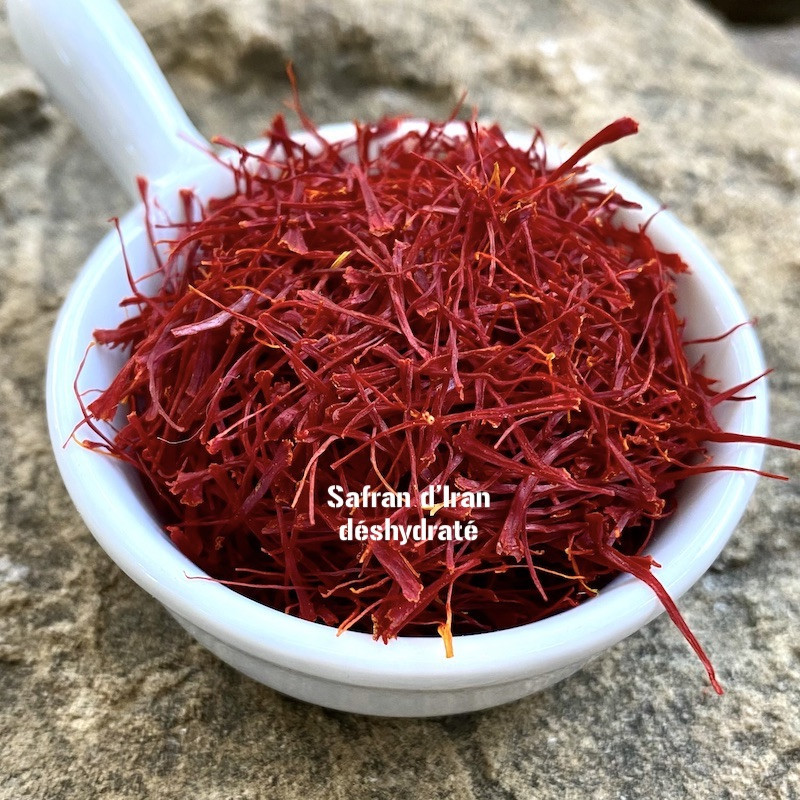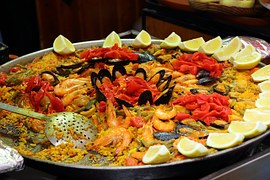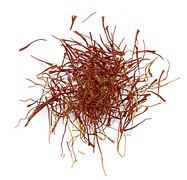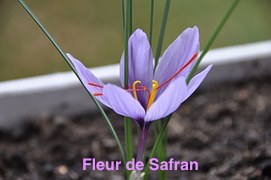
Reference: 408190301


The aroma of saffron is warm, captivating, unforgettable...!
It is essential in paellas, delightful with fish and seafood, perfect for enhancing rice, and even great for elevating chicken and rabbit dishes.
 Delivery
Delivery
Mondial Relay
 Returns
Returns
See conditions
 Payments
Payments
100% secure
°°°
 Saffron has a warm, unforgettable aroma and a slightly bitter, delicious taste that is absolutely unique in the world of spices! Those who have never tried saffron can't imagine what they’re missing...! This exceptional aromatic power, which allows for the use of very small amounts, makes it accessible to most of us despite its high price per kilogram. Indeed, it’s said that just 1/10th of a gram (called "1 dose") is enough to flavor a dish for about 3 people. With 1 gram of saffron, you can flavor a dish for 30 people! So despite its high cost, it’s not the most expensive ingredient in the dish!
Saffron has a warm, unforgettable aroma and a slightly bitter, delicious taste that is absolutely unique in the world of spices! Those who have never tried saffron can't imagine what they’re missing...! This exceptional aromatic power, which allows for the use of very small amounts, makes it accessible to most of us despite its high price per kilogram. Indeed, it’s said that just 1/10th of a gram (called "1 dose") is enough to flavor a dish for about 3 people. With 1 gram of saffron, you can flavor a dish for 30 people! So despite its high cost, it’s not the most expensive ingredient in the dish!
To make the best use of saffron threads (also called filaments or stigmas, whichever you prefer!), they should be infused for about fifteen minutes in a small amount of very hot water (the aroma is water-soluble, meaning it disperses best in water) rather than in fats, for example! Then, add the entire mixture, including the infused water and threads, to your dish. Be sure to use a small amount of water to avoid "diluting" the dish. This step should be performed at the beginning of the cooking process so the saffron-infused water and threads can fully disperse in the dish.
Saffron in powdered form, as it is already ground, doesn’t require this step since it mixes immediately with food.
Saffron is a key ingredient in paella, risotto, and refined fish and seafood dishes, to which it brings its wonderful aroma and beautiful golden-yellow color. You can also enjoy it in fish soups, rice, bouillabaisse, and even with certain white meats, such as chicken or rabbit. These often ordinary meats can be transformed into royal dishes by simply cooking them in a pot with tomatoes and onions, then adding saffron.
Saffron is also widely used in Indian, Iranian, and Arabic cuisines (in very small doses, in certain couscous or tagines).
In Switzerland and Sweden, it’s added to a type of brioche. Finally, it is used in the production of spirits such as Chartreuse and Izarra.

Origin: Iran

Due to its high price, saffron is still often replaced or mixed with other products, especially in countries with less stringent controls. For threads, this might be with safflower, for example, or worse, with dyed wood fibers that can sometimes be harmful to health. With powder, it’s even easier for fraudsters: saffron is partially replaced with ground brick, turmeric, paprika, or sweet pepper. These substitutes are, of course, sold as pure saffron, often at the price of pure saffron, yielding significant profits for the fraudsters.
In the past, saffron was used to dye fabrics for wealthy merchants and nobles, particularly in China and India, as well as in France. The higher the proportion of saffron, the more the color leaned toward red. However, this dye was fragile and faded over time, eventually turning pale yellow or creamy.
The plant is thought to originate from Crete, not Central Asia as long believed, and was first cultivated in Greece over 35 centuries ago! Saffron comes from the three red stigmas (or threads) that are harvested from the flower of a small bulb in the Iridaceae family. The plant closely resembles the spring crocus of our gardens and the autumn colchicum, which is highly toxic! The length of the "threads" varies from 2.5 cm to 3.2 cm. The saffron bulb is a perennial plant that no longer exists in the wild. The flower pollen is sterile, meaning the plant relies on humans for reproduction! Bulbs (or "corms") die after flowering but produce up to 10 small bulbs, which will grow into new plants after being divided by humans. This is the only remaining method of reproduction for saffron, and even that depends on human intervention. After a summer dormancy, fine vertical leaves emerge, followed by purple flowers in October. Each flower contains one "style" with three forks, each ending in a dark red stigma. These stigmas are sought after for their taste and strong aroma.
Harvesting must be done quickly because flowers wilt rapidly after blooming at dawn. This delicate process is performed by hand, flower by flower, to avoid damaging the stigmas. Once separated from the petals, the stigmas must be quickly dried to prevent mold. It takes around 150 flowers, yielding 450 threads, to produce just 1 gram of dried saffron. Freshly picked flowers provide 0.03g of fresh saffron, which reduces to 0.007g when dried—an 80% loss in weight! To produce 450g of dried saffron, about 50,000 flowers are needed, equivalent to a football field of cultivation. This entirely manual labor explains the high price of saffron, not its rarity, as it grows easily in many temperate regions. Global saffron production is around 300 tons annually, with Iran and Spain accounting for nearly 80% of this.
In Europe, at least three varieties of saffron are cultivated. Spanish varieties are milder in flavor and aroma, Italian varieties are stronger, and the most intense varieties come from Macedonia, Greece, Iran, and India. Each country produces saffron with its own distinct taste, shaped by the diversity of strains.
Saffron thrives in climates similar to the Mediterranean, tolerating relatively harsh winters with frosts down to -10°C and even short periods of snow. In very arid regions, irrigation is necessary. The plant requires sunlight, but it’s vulnerable to pests such as rodents, insects, and worms. The most destructive of all is the vole, which devours the bulbs.
Besides its extraordinary aroma, saffron contains a carotenoid called crocin, which is water-soluble and gives dishes their golden-yellow color.
°°°
It was the Arabs who brought this spice to France, introducing it first in the Gâtinais region during the Middle Ages. France then became an important saffron producer for over 500 years, particularly in the renowned Gâtinais area. However, production slowed after the French Revolution and nearly disappeared due to harsh winters in the late 19th century and the arrival of chemical dyes. In recent decades, efforts have been made to revive French saffron production, but it remains extremely expensive due to high production costs.
The major saffron producers of antiquity (Iran, Spain, India, and Greece) continue to dominate the global market today, although in recent years, saffron cultivation has expanded to New Zealand, Australia, and California.
English: Saffron German: Safran
***
Data sheet
 Jean-Philippe L.
Jean-Philippe L.
PAS ENCORE UTILISÉ

 Jean-Philippe L.
Jean-Philippe L.
PAS ENCORE UTILISÉ

Reference: 408190301
Reference: 810220
Reference: EPI2301003
Reference: 810220

The aroma of saffron is warm, captivating, unforgettable...!
It is essential in paellas, delightful with fish and seafood, perfect for enhancing rice, and even great for elevating chicken and rabbit dishes.